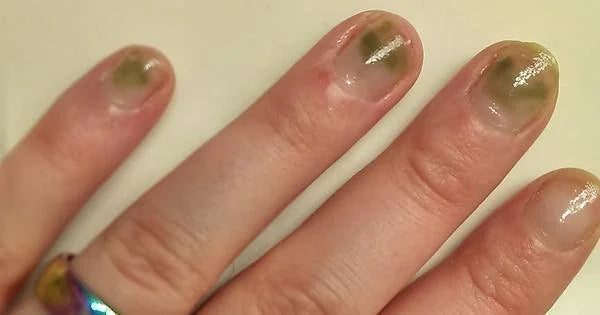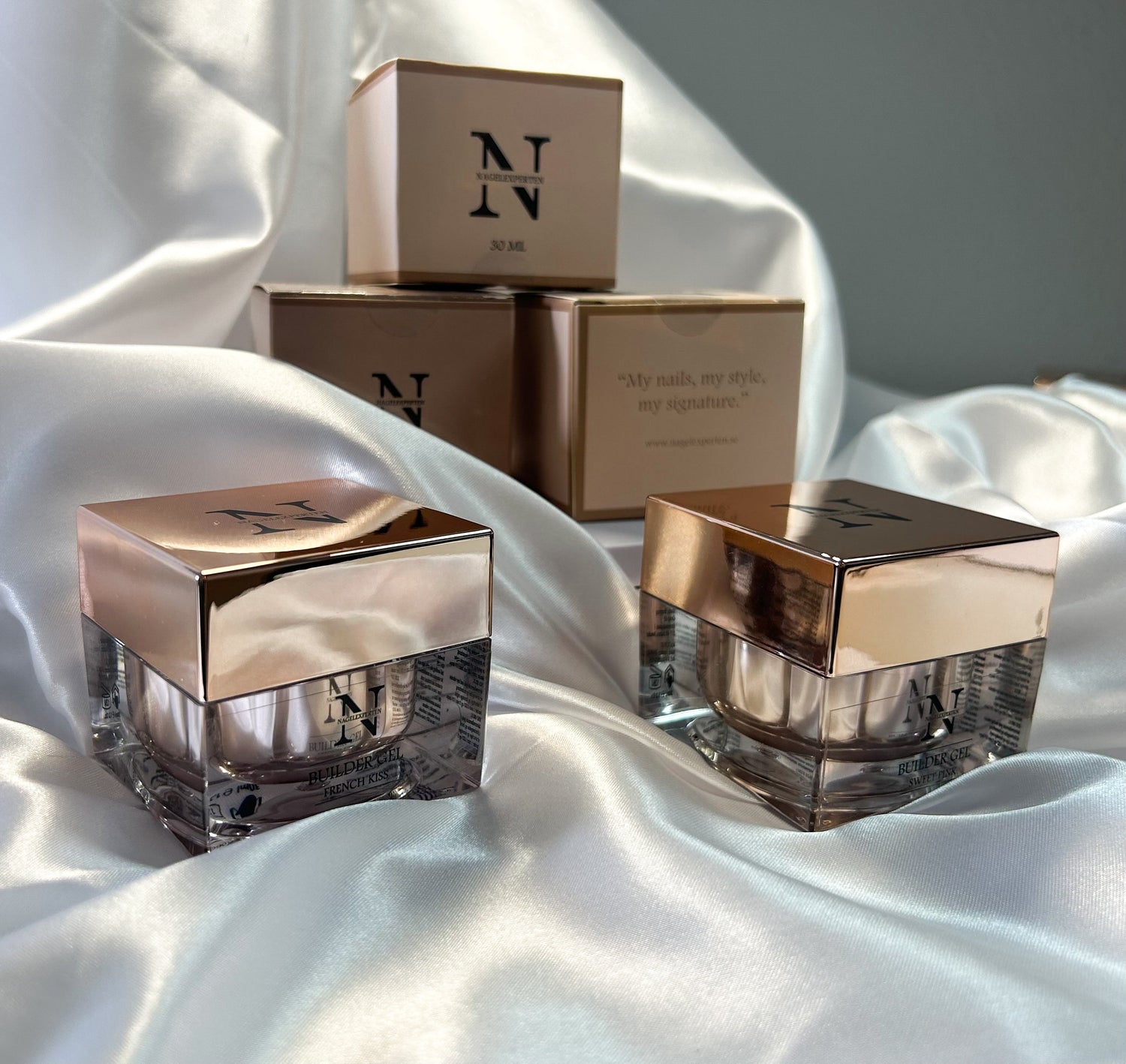
Why has my nail turned green?
What is a Greenie?
A greenie, also known as a "green spot" or "pseudomonas infection," is a green discoloration that occurs on the nail. It is caused by the bacteria Pseudomonas aeruginosa, which thrives in moist, oxygen-poor environments. When this bacteria comes into contact with the nail, especially under artificial nails (such as acrylic or gel), it can lead to a so-called "greenie," which manifests itself in the characteristic green color.
Causes of Greenie
- Moisture Under the Nail: One of the most common causes of a greenie is moisture getting trapped between the natural nail and the artificial material. This can happen if the nail is not properly sealed or if water gets in through small cracks or lifts.
- Poor Hygiene: Poor hygiene when applying or removing artificial nails can lead to a bacterial infection. Using dirty tools or not cleaning your nails properly before application can increase the risk.
- Damage to the Nail: If the nail is damaged or if there is a lift in the artificial nail, bacteria can easily enter and cause an infection.
- Poor Application Technique: Failure to apply the artificial material correctly, resulting in air pockets or incomplete sealing, can create an environment where bacteria can thrive.
How to Avoid Greenie
- Proper Nail Preparation: Clean the nail thoroughly and make sure it is completely dry before applying any artificial material. Use a disinfectant to eliminate bacteria from the nail plate.
- High-Quality Products and Tools: Always use high-quality products that are made to minimize the risk of bacterial infections. Make sure all tools are properly cleaned and sterilized before use.
- Tightly Sealing the Nail: Apply the artificial material carefully and ensure that it is properly sealed around the entire nail. Check the nails regularly for signs of lifting or cracking and address these immediately.
- Avoid Moisture: Keep your nails dry and avoid prolonged exposure to water. Wear gloves when cleaning or handling harsh chemicals or where your nails will be under water for an extended period of time.
- Regular Maintenance: Do fill-ins every 2-3 weeks to prevent the build-up of moisture and bacteria.
What to do if you get a Greenie?
If you spot a greenie on your nails, it's important to act quickly:
- Remove the artificial nail: Remove the acrylic or gel to expose the natural nail.
- Clean and disinfect: Wash the nail thoroughly with soap and water, followed by an antibacterial solution.
- Let the nail breathe: Leave the nail without artificial material until it is completely healed.
- Seek professional help: If the infection is severe or you are unsure how to treat it, seek help from a professional nail technician or doctor.
Summary:
A "greenie", also known as a "green spot" or pseudomonas infection, is a green discoloration that occurs on the nail. It is caused by the bacteria Pseudomonas aeruginosa. This bacteria thrives in moist and oxygen-poor environments and can lead to infection when it takes hold under artificial nails such as acrylic or gel. The characteristic green color is a clear sign of the infection. Causes of a greenie include moisture trapped under the artificial material, poor hygiene during application or removal, damage to the nail that creates cracks or lifting, and poor application technique that leaves air pockets where bacteria can thrive. All of these factors contribute to creating an environment in which Pseudomonas aeruginosa can grow.
To avoid greenies, it is important to prepare the nail carefully by cleaning and disinfecting it, using high-quality and sterilized tools, and ensuring that the artificial material is applied evenly and sealed properly. Keeping your nails dry and avoiding prolonged exposure to water is also crucial, as is performing regular maintenance and checking your nails for any damage or lifting.
If a greenie occurs, it is important to remove the artificial material and clean the nail thoroughly with soap, water, and an antibacterial solution. The nail should be left without artificial material to heal, and if the infection is severe or uncertain, professional help should be sought from a nail technologist or doctor. Taking action quickly can prevent the infection from getting worse.

